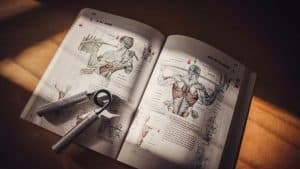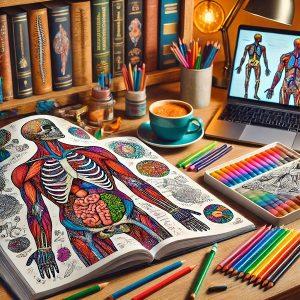
What is Anatomy?
Anatomy is the scientific study of the structure of living organisms, particularly their physical form and organization. It involves dissecting and examining the body to understand the relationships between different parts and how they function together. Knowledge of anatomy is essential for fields like medicine, biology, and physiology.

How Many Bones Are in the Human Body?
The human body is comprised of 206 bones. These bones provide structure, protect organs, anchor muscles, and store calcium. The number of bones can vary slightly between individuals due to genetic variations or the presence of extra bones, such as supernumerary ribs.
What Are the Major Organs in the Human Body?
The human body contains several major organs, each with specific functions crucial for survival. These include the heart (circulatory system), lungs (respiratory system), liver (digestive system), kidneys (urinary system), and brain (nervous system). Each organ plays a vital role in maintaining homeostasis and overall health.
What Is the Largest Muscle in the Human Body?
The gluteus maximus is the largest muscle in the human body. Located in the buttocks, it is responsible for movement of the hip and thigh. This muscle is essential for activities such as walking, running, and climbing.
How Does the Circulatory System Work?
The circulatory system, also known as the cardiovascular system, consists of the heart, blood vessels, and blood. It transports oxygen, nutrients, hormones, and waste products throughout the body. The heart pumps blood through a network of arteries, veins, and capillaries, ensuring that every cell receives the necessary substances to function properly.
What Are the Different Types of Joints?
Joints are where two or more bones meet. They can be classified into three main types: fibrous (immovable), cartilaginous (partially movable), and synovial (freely movable). Synovial joints, such as the knee and shoulder, are the most common and allow for a wide range of movements.
How Many Muscles Are in the Human Body?
The human body contains over 600 muscles. These muscles are classified into three types: skeletal (voluntary), smooth (involuntary), and cardiac (heart). Skeletal muscles are attached to bones and enable movement, while smooth muscles are found in organs and help with functions like digestion and blood flow. Cardiac muscle is found only in the heart and is responsible for pumping blood.
What Is the Function of the Nervous System?
The nervous system controls and coordinates body activities. It consists of the brain, spinal cord, and peripheral nerves. The nervous system processes sensory information, regulates bodily functions, and enables thought, memory, and emotion. It is divided into the central nervous system (CNS) and the peripheral nervous system (PNS).
What Are the Main Components of Blood?
Blood is composed of four main components: red blood cells, white blood cells, platelets, and plasma. Red blood cells carry oxygen from the lungs to the rest of the body. White blood cells are part of the immune system and help fight infections. Platelets are involved in blood clotting, and plasma is the liquid portion that carries hormones, nutrients, and waste products.
How Does the Respiratory System Function?
The respiratory system is responsible for breathing. It includes the nose, trachea, lungs, and diaphragm. The process of breathing involves inhaling oxygen-rich air and exhaling carbon dioxide. Oxygen enters the bloodstream through the alveoli in the lungs and is transported to cells, while carbon dioxide, a waste product, is expelled from the body.
What Are the Layers of the Skin?
The skin is the largest organ of the body and consists of three main layers: the epidermis, dermis, and subcutaneous tissue. The epidermis is the outermost layer, providing a barrier against pathogens. The dermis contains blood vessels, nerves, and sweat glands. The subcutaneous tissue, also known as the hypodermis, consists of fat and connective tissue, providing insulation and cushioning.
What Is the Role of the Digestive System?
The digestive system breaks down food into nutrients that the body can absorb and use. It includes the mouth, esophagus, stomach, intestines, liver, pancreas, and gallbladder. Digestion involves both mechanical and chemical processes, converting food into energy and eliminating waste products.
How Does the Endocrine System Work?
The endocrine system consists of glands that produce hormones, which regulate various bodily functions. Major glands include the pituitary, thyroid, adrenal, and pancreas. Hormones control processes such as metabolism, growth, reproduction, and stress responses. The endocrine system works closely with the nervous system to maintain homeostasis.
Understanding the fundamental questions about anatomy helps in appreciating the complexity and efficiency of the human body. Whether you are a student, a professional, or simply curious, exploring these topics provides valuable insights into how our bodies function.




